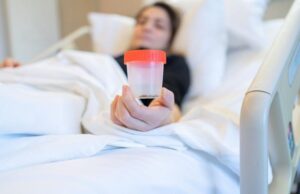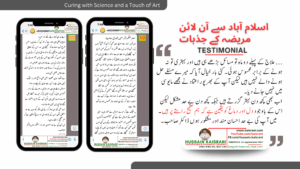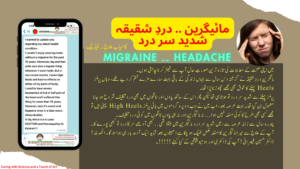Calcarea Sulphurica
Calcium Sulphate, CaSO4.
Gypsum. Plaster of Paris.
Trituration.
The essential features
The general idea that runs through this remedy is of an organism which tends to produce tumours and abscesses that not only do not heal easily, but that suppurate profusely and for long periods of time. The characteristic trait of the remedy is not its tendency to the formation of abscesses themselves, rather the fact that an abscess opened is very slow to heal and has a continuous discharge of yellow pus. In cases of inflammation, this organism quickly reaches a state of suppuration, which tends to continue. The presence of pus with a vent is common.
I have found this remedy effective in cases of malignant acne in young people and also in hidradenitis suppurativa with cicatrices forming during the healing process. I must however point out here that some severe cases of this type of chronic condition will need more than one remedy to complete the cure. In cases of acne both cheeks present a crusty, ugly, uneven surface of dried pus mixed with blood and serum. The suppuration is so profuse that the patient cannot clear it up fast enough, and it forms again immediately after cleaning.
Calcarea sulphurica can be useful in malignant growths after ulceration has set in, where a lot of pus forms. As Kent says, ‘if given early enough it will prevent a malignant growth terminating in its usual way,’ and in later stages it may be ‘an excellent palliative.’
Abscesses of the teeth and gums (granuloma apicale, gumboils) with discharges of pus are easily managed with this remedy, even if very obstinate.
Sometimes we have effected deep cures by prescribing on a superficial level like this on the teeth; the Calcarea sulphurica patient generally has a strong tendency to recurrent tooth and gum abscesses.
If you take a long-term view of a case where a patient is suffering with an internal disease, and you find recurrent abscesses or severe acne or even hidradenitis suppressed by antibiotics in the patient’s history, then there is a definite possibility that this is a case of Calcarea sulphurica. Fistulae are also a pathological condition that is often found in this remedy, especially perianal fistulae with painful abscesses. This has been repeatedly confirmed in recent times, by Wolfgang Springer who cured a case of multiple perianal fistulae formation of several years’ standing with Calcarea Sulphurica, and Vogt (Allgemeine Homöopathische Zeitung, 1963) who reports several cases of suppurating fistulae due to injection or drainage wounds that promptly gave way to this remedy.
The remedy may help in cases of glomerulonephritis, where there are tube casts and albumen in the urine, where the heart is involved and when this is a complication after an epidemic disease in children (e.g. scarlatina). It is also useful in advanced cases of diabetes where there is ulceration on the skin without the ability to heal itself.
There are many other pathological conditions that respond to Calcarea sulphurica, mostly linked to the general idea of suppuration. Suppuration in any organ or part of the body points to this remedy: from the ear, e.g. in otitis media, purulent nasal catarrh, tuberculosis of the lung with a lot of slimy and purulent expectoration, abscess of tonsils, suppurating glands, purulent exudation in serous sacs, deep suppurating ulcers on cornea, etc. Recurrent abscesses, of the skin or elsewhere, are a strong feature of the remedy. It is also indicated in burns or scalds or chilblains, if and when suppuration sets in.
In short, ‘all ailments in which the process of suppuration continues too long and the suppuration affects the epithelial tissues’ (Boericke and Dewey) should make you consider Calcarea sulphurica. Generally, the pus discharged tends to be yellow or else bloody and often thick and lumpy. The same qualities usually apply to all the discharges from mucous membranes, as in cough, gonorrhoea, leucorrhoea, coryza, and so on; they are often also purulent or pus-like. Glands and lymph nodes are inclined to swell and ulcerate.
Upon the skin we see pathologies such as: milk crust or ‘scald-head’ of children; crusty eczemata, often connected with glandular swellings; skin infections with yellowish, greenish, or brownish scabs; thick, yellow, purulent exudation; lupus vulgaris and lupus erythematoides; acne vulgaris; pemphigus foliaceus. In addition, there is an inclination to form fibrous polypi of mucous membranes and various kinds of tumours: cystic tumours; fibromata and fibroids; also malignant tumours like scirrhus.
The connective tissues are also included in the sphere of action of Calcarea sulphurica. They are weak, and due to this weakness they tend to easy inflammation and suppuration.
Moreover, the musculo-skeletal system is often affected. Calcarea sulphurica may be useful in complaints from straining muscles and tendons, from over-lifting, etc., when the pain stays for a long time and apparently indicated remedies fail to act. The remedy is also useful in bone infections, including caries of bone. Epilepsy, epileptiform and hysteric convulsions with twitching of muscles all over the body come under the action of Calcarea Sulphurica as well.
Malice, irritability and jealousy
The constitutional Calcarea sulphurica patient is not an easy case to deal with. The remedy is not easily recognisable by its mental-emotional characteristics. This patient does not know how sick he is, and will hide his mental state because he does not realise that he has a problem. He will not talk about it, but the information will come rather from relatives.
The main feature I have found in the mental-emotional pathology is an exaggerated sense of self-importance. There is a marked hidden egotism and we frequently see the traumatic effects of false modesty. Such patients go along in life expecting everybody to appreciate what nice and clever people they are, and therefore are deeply hurt by people not paying attention to them or not duly appreciating them. They moan and complain and hold grudges if they feel that others do not appreciate them. This idea is central to the remedy.
Imagine a patient who has an internal wound that cannot heal, cannot close, and it oozes and suppurates, and you wonder where all this pus is coming from day after day, week after week, or even year after year. The same idea may be applied to the soul which has been wounded and which oozes not blood but pus. There is something rotten inside the patient, a process of decomposition is taking place. The ego has been hurt and the soul weeps, but not in a healthy way.
A general discontent is shown, with morose and obstinate mood. The patient loathes life and becomes malicious with others. He has a quarrelsome nature, and, expecting others to do as he says, he feels insulted or offended if this is not the case, and hatred or contempt overtakes him just because people do not agree with him. He does not want to be talked to, and he has an aversion to answering questions and to company. The alternate reaction is to complain because they don’t feel duly appreciated.
These individuals are easily irritated and roused to anger. A highly impatient and impetuous manner is often found, and they seem to be always in a hurry. Great irritability has been noted in the late afternoon, and in the evening as well, and ‘irritable after coitus’ is also a symptom that has been observed. Once the irritation and the anger have been expressed the patient becomes totally exhausted and very weak.
Jealousy is one of the strong aspects of this remedy. In this respect it is similar to Lachesis and Salicylicum acidum, there is a malicious jealousy in all three of them. Irritability and jealousy can grow to an almost pathological degree.
Other mental characteristics
Changeable moods are frequently noted in this remedy, especially in the afternoon and evening. Some of the mental states are aggravated in the morning, with sadness on waking, but in the evening the patients become mirthful, even joking and laughing out loud. This symptom was successfully used as a key-note in the fistula case of Springer mentioned above, and thus confirmed.
But there are also other time modalities as to the changeable mood: ‘Good spirits, best about 6 p.m.’ ‘Excessive gaiety of spirits in the afternoon.‘
‘Very low-spirited in early evening, then more cheerful, then ‘blue’ again.’ Even the reverse order has been noted in the proving: ‘Great restlessness
in afternoon and evening, with sadness, dislike to talk; petulant; desire to weep and to be miserable, alone, and unhappy; moderately cheerful in the morning; change not sudden, but between 2 and 3 p.m. ‘
This kind of tearful mood, which is common in this remedy, is often coupled with a gloomy melancholy, from which he can however easily be aroused to take part in conversation. Or he may sit and brood, absorbed with imaginary misfortunes and refuse to answer; apathetic, indifferent, not wanting any disturbance.
There may be a desire to do something but it does not last long, as Hering’s symptom shows: ‘Sometimes desire to walk, to attend something; as soon as she sets out to do it the desire is gone.’
The Calcarea sulphurica individual is constantly in a state of apprehension. He may be timid, bashful and apprehensive all the time, which renders his conversation extremely wearisome; also many little delusions, whimsies and strange fancies. He has fits of excessive, bitter melancholy with distressing apprehensions of evil to loved ones. There are many fears and anxieties: anxiety about the future; about his heart and his health in general; about salvation; fear of death; that some evil will befall him; of insanity and of misfortune. Anxiety and fear especially come on in bed: in the evening or during the night, but also in the morning on waking. Sees frightful images at night when trying to sleep. In the fever heat, the fear and anxiety is also aggravated. Then the patients will suffer from great despair of recovery. But in the open air, the apprehensions will be ameliorated, like many other complaints with this remedy.
The intellect becomes sluggish. Especially on waking in the morning and again in the evening, there is a dazed, confused state of mind, which is also provoked by mental exertion. A sudden loss of memory may occur in these people, they can scarcely remember what they were going to do. ‘Old
issues, which have been long decided, are presented to mind, and I can’t recall my decision’ is a symptom a prover experienced suddenly after lunch. While busily engaged thinking, suddenly the thoughts may vanish altogether. Stumbles in speaking and misplaces words. This kind of confusion of mind, like other symptoms, is also ameliorated in the open air.
The states of mental weakness may also be accompanied by an indifference as to the surroundings, with dullness of the senses, an incapability to make decisions, a condition of irresolution and a great deal of timidity. Averse to any mental work, lazy and weary, sometimes coupled with restlessness.
Generalities
The patients tend to be cold in general, and they easily catch colds, especially from exposure to a draught, to cold, wet weather, etc. But at the same time, they are remarkably sensitive to heat as well. In laryngeal diphtheria or similar conditions they have a strong desire to uncover, and open air actually relieves their condition (contrary to Hepar). However, heat does relieve in certain complaints: the pains of the body are often relieved by local heat. This is true for the pains from fistulae, and also from acute and chronic rheumatism. Standing makes the pains in the joints worse.
Violent rushes of blood, flushes of heat, pulsations throughout chest and head, sometimes extending into limbs.
Laziness, languor, weakness and fatigue are frequently to be seen. Very weary and dull all day, could easily fall asleep. Fatigue and restlessness, with sadness. They feel tremulous weakness and crave stimulants to overcome it. The fatigue may be coupled with a certain stiffness and painful rigidity, especially in muscles of limbs.
Excessive fatigue between 10-12 a.m.; intolerable lassitude in the afternoon, after a nap, feeling perfectly miserable, weak and languid. Great exhaustion after waking from a frightful dream.
Calcarea sulphurica patients often look very pale and have a tendency to obesity. Tending to have many skin infections, they may have, according to Margery Blackie, the red rough skin of Sulphur. Candegabe says that they are inclined to a doughy obesity, frequently have a stooped body posture and broad hands with long fingers.
This remedy is especially useful in constitutions broken down by alcoholism.
Lack of reaction to well-selected remedies is a general feature. Calcarea sulphurica may be indicated when well-selected remedies act for only a short time, as with Sulphur, Tuberculinum and Psorinum.
Springer recommends to think of Calcarea sulphurica in cases of glandular swellings that are unusually soft.
Worse from draught; touch (but, according to Clarke, without the excessive sensitivity to touch seen in Hepar); cold and wet, but also warmth in many forms: warm rooms, warm wraps, warmth of the bed, getting warm or overheated. At night; also on waking and from exertion (physical or mental). Strong desire to be in the open air, and feels better there. Ameliorated by uncovering, bathing, eating, local heat (for body pains).
Vertigo
Vertigo on getting up in the morning, or again in the evening; ameliorated in the open air. Vertigo with deadly nausea; on moving head quickly.
While walking, dizzy in head and weakness and oppression from head down to stomach.
Vertigo with a tendency to fall over.
Epileptic vertigo.
Head
Flushes of heat in head: morning and evening; forehead and vertex. Congestion of brain is frequent, especially evening and night; in a warm room; after stimulants; on coughing; during menses or with suppressed menses. This is, once again, better in the open air. But also: coldness of head, especially vertex.
The head feels constricted, particularly the forehead and the occiput. Sensation around head as though he had his hat on; tries to grasp it to take it off, but discovers there is no hat.
Pain around the head, several times before going to bed. Tearing around whole head, with nausea, when rising from lying; ameliorated while lying. Rising from lying causes pulsation and increases the pain.
Many inveterate chronic and periodic headaches have been cured with this remedy. The periodic headaches often come on in morning (on waking) or in evening (after evening meal) and are frequently centred in the forehead. They are in most cases ameliorated by open air. Periodic sick headaches with nausea and vomiting.
Other causes: headaches from concussion; from becoming cold, but made better by cool air; from becoming heated, aggravated by jarring.
There is pulsating with nearly all the headaches. Spasmodic throbbing headache, mostly in frontal region, in morning.
Many headaches are of a pressing character and aggravated by mental exertion (reading, etc.).
Some more modalities: headaches worse from looking upwards, moving head, noise, standing, stooping, heat of sun, talking, washing, cold weather; better from pressure.
Crusta lactea with purulent discharge or yellow, purulent crusts.
Pimples, pustules, hard swelling, eczema etc. appear on the scalp, often with suppuration and scabs or crusts, but sometimes also dry eczema. The affected places may be sore and sometimes burning or itching. There is much dandruff and the hair tends to fall out.
Eyes
Inflammation of eyes, with discharge of thick, yellow matter; worse evening and night; canthi are particularly affected. Eyes red and hot; red like raw beef; bleared, red, with colic.
Phlyctenular keratitis and conjunctivitis, with enlarged cervical glands.
Purulent discharge in ophthalmia neonatorum.
Has been very useful in cases of injury to the eye by a foreign body, if much matter was discharged and the organism was unable to absorb it. In one case a splinter of wood had caused inflammation of conjunctiva and lids and a loss of vision on the affected eye. The cornea was dim, the anterior chamber between cornea and iris exhibited a smoky appearance, and some matter could be seen floating quite distinctly. Hepar failed, but Calcarea sulphurica led to complete resorption of the pus, the eyesight was restored, and the inflammation disappeared (Köck). Deep ulcers on the cornea.
Fissures of canthi.
Smarting of eyes in inner corners.
Cutting pain in eyeball, with some soreness, as though eyes were sunken in head, with headache.
Pain in right eye from looking at a piece of paper.
Lids stick together in morning.
Twitching of eyes and eyelids, sometimes with occasional blindness.
Dim or foggy vision.
Sees only half an object, late in evening.
Flickering before the eyes.
Falling of eyelashes.
Ear
Suppuration from middle ear, pus thick, mixed with blood, sometimes offensive. This may be accompanied by diminished hearing and subjective noises, such as singing or ringing. Such cases often date back to a scarlet fever. The meatus may be filled with pus; abscesses in the meatus are an important indication. The otorrhoea may or may not be accompanied by pain.
Catarrh of Eustachian tube.
Mastoiditis.
Dark-brown wax in ear; earache relieved by removing it.
Right parotid sore; better when walking in open air.
Pimples around or on top of ear; sensitive swellings behind ears with tendency to suppuration.
Nose
Easily and frequently catches colds, especially from draught (open windows). Coryza with thick, yellow, lumpy discharge; often purulent and blood-streaked. Kent remarks that even most inveterate cases of nasal catarrh have been cured by the remedy, and that, clinically, the one-sided cases responded best. For example: yellowish mucus from left nostril, with tears from left eye.
There are two important modalities concerning coryza and sneezing. First, open air very often ameliorates. The provings give symptoms such as:
‘Tendency to influenza and sneezing, disappearing in the open air.’ ‘Very little expectoration but considerable influenza, disappearing in open air, and worse in right nostril.’
Second, bathing or washing, especially with cold water, exerts a powerful influence. It may cause or aggravate the nasal discharge, but also ameliorate: ‘Always blows yellowish or greenish mucus from nose in morning after bath’, but also: ‘Excoriating coryza in open air, soon disappearing
in the house and after washing face in cold water.’ The last symptom shows that also open air may aggravate as well.
During the day, dry coryza in left nostril, while right nostril discharges white watery mucus in small quantities; at night reversed: right nostril dry, left nostril discharging.
Watery coryza from anterior nares; posterior nares closed tight, has to breathe through mouth. Bloody coryza in infants. Epistaxis during sleep and daily on washing face.
Loss of sense of smell. Caries of nasal bones.
Quivering or crawling sensation on root of nose, extending to cheek.
Face
Pale and sickly complexion, but a lot of eruptions and also of flushing in the face.
Acne vulgaris forms crusts from pus and serum. Pimples and sores, with dry yellow scabs, itching. Pustules; herpetic eruptions; boils on forehead; eczema; lupus erythematoides. Many pimples under beard, discharging blood after scratching, or discharging an oily transparent matter.
The lips may be cracked, and yellow blister-like sores that burn and smart on touch appear.
Sensation of great heat in face and eyes, but parts are really cool; great desire for and relief in open air. Darting, neuralgic pains in right side of face.
Mouth
Dry, hot mouth.
Ulcers and vesicles in mouth. Inflammation and swelling of mucous membranes.
Soreness inside lips, raw and burning and on the roof of mouth, as though burnt, during lunch.
Tongue yellow coated at back part, like a layer of half-baked clay.
Swelling and inflammation of tongue; when suppuration sets in. The swollen, stiff tongue renders speech difficult. Mouth has a soapy, sour, acrid or bitter taste.
An important remedy in gumboils and abscesses.
Swollen, sore gums; bleeding on brushing teeth. Toothache greatly aggravated by gently stroking gums. The teeth are sensitive to cold air and water.
Throat
On this subject, I would like to quote Margery Blackie’s lucid remarks: ‘A great throat remedy. It has the characteristic that it is apt to push out infection. The whole mouth is dry. As a rule, the front of the mouth looks quite clear and clean. But if you make them open their mouth a bit wider, the whole of the back of it is coated yellow, with a lot of secretion they cannot get rid of. They get pain on swallowing and a tendency to ulceration of the tonsils, and a rapid involvement of the glands of the neck. Feeling of fullness and choking, quite often a sort of air hunger, thirst for cold drinks or fruit. They are all worse for hot things to the throat …’ (Emphasis G.V.) Some additions: fauces and throat swollen, red, sore; suppurating sore throat.
Thick, yellow mucus is drawn from the posterior nares.
Sensation of a plug in throat.
Tonsillitis, when peritonsillar abscess is discharging.
Respiratory tract, chest and heart
Obstinate hoarseness, ameliorated in open air.
Sensation of dust in larynx.
Choking is characteristic of this remedy, as it is of Hepar. Laryngeal diphtheria with much choking, patient throws off the covers and wants the air, which ameliorates him definitely; while Hepar will be worse from uncovering and slightest draught.
Much mucus in air passages, catarrh with thick, yellow or whitish, lumpy discharge, or pus-like secretion. Profuse expectoration. Expectoration of transparent mucus early in day, yellowish from about 12-3 p.m. , transparent again towards night.
Difficult respiration: rattling and short; with wheezing and suffocative attacks, may hence be indicated in asthma cases. Asthma or cough with hectic fever; purulent, sanious sputa. Asthmatic cough, croupy in morning on waking and after siesta.
There is much mucus in the air passages and they feel raw and painful; catarrh that is thick, lumpy, white-yellow or pus-like.
Tight, short cough leaving rasped feeling in throat and strained sensation of chest and head. Coughing after bathing; cough often ameliorated in cold or open air.
Bronchitis with yellow, yellowish-green, or blood-tinged expectoration.
Oppression and rawness of the chest; burning and weakness of chest. Chest lame and raw behind sternum, with nausea in morning, reaching a climax at about half past one in a small, close, crowded room, (while witnessing an operation), then deadly nausea and vertigo; could hardly get into the street where in about 15 minutes felt better.
Empyema, pus forming in pleural cavities.
Anxiety in region of heart. Anxious palpitation; at night.
Stomach
Increased, even ravenous appetite and thirst; or appetite completely lacking. Eating generally ameliorates his condition. Desires: green, sour fruit and vegetables; tea and wine; refreshing things, salty things. Aversion to meat, milk and coffee.
Bitter or sour eructation; at night.
Nausea: with vertigo; with headache; with pain in pelvis.
Easily subject to indigestion, particularly after breakfast.
Sensation of weight in stomach and chest in the morning, relieved after lunch.
Pain in and at stomach: cramps, spasms; single spasm of cutting colic in stomach precedes stool; soreness; wandering pains in stomach and abdomen; pain from stomach to liver; colic, relieved temporarily by drinking cold water, with sensation of constriction in stomach, followed by stool, afterwards much flatulence and eructation.
Abdomen
Violent pain in liver region.
Cramps and colic in hypochondria; all day, or late in evening; at night after retiring, with great restlessness.
Flatulence, with distension and colic from incarcerated flatus. Putrid-smelling flatus. Flatulence and eructation after bath. Great coldness in the abdomen, with distension.
Sharp, cutting, darting colic; after ice-water (which was very unusual to the prover); with rumbling; with bleared eyes. Appendicitis.
Feeling in lower part of abdomen as if skin were too tight, with pain.
Pain in right side of pelvis, followed by fatigue, nausea and pain in stomach.
Extravasation of pus within pelvic tissues unconfined by any pyogenic membrane, or when a pus-bag is formed by the rupture of an abscess wall without finding an outlet into the pelvic viscera.
Rectum
Calcarea sulphurica is very frequently indicated in painful or painless abscesses about anus where there is constant discharge of pus. Anal fistulae also form a very well-confirmed indication.
Anal prolapsus.
Itching and formication of rectum. Moisture about anus, causing smarting and itching.
Pressure on bowel, as if to stool, and constriction of anus after breakfast.
Stools may be preceded by spasms of cutting colic in stomach or abdomen.
Stools with great tenesmus, with excoriating, biting and burning sensation at anus, and hard pieces at night. Large, hard stool, tenesmus at close of stool, with convulsive shuddering during passage, leaving smarting-burning at anus.
Inveterate constipation; difficult, insufficient stools.
Diarrhoea: morning or evening diarrhoea; from change of weather or after eating maple sugar; with discharge of pus, or bloody pus; very useful in diarrhoea of children, worse after eating ever so little, painless, involuntary. Diarrhoea of long standing, stools of a mushy consistence, coated tongue.
Dysentery, if stools consist of pus-like slime; also mixed with blood.
Urging for stool, morning on waking; first part hard, last part thin. Light-coloured stools; undigested.
Urinary organs
Chronic nephritis, with great pain in kidney region day and night, and great, weakening discharge of pus in the urine. Nephritis subsequent to scarlatina. A valuable remedy for catarrh of the bladder where there is copious yellow pus.
Urethral discharges: yellow, bloody, often gleety. Purulent, sanious discharge in gonorrhoea. Burning in the urethra during urination.
Bright’s disease, if symptoms correspond.
Red urine during hectic fever.
Male genitalia
Abscess in prostate gland.
Spermatorrhoea with impotence.
Uneasy feeling of genital organs; bruised pain in testes as if crushed or injured; drawing sensation in spermatic cord and testicle, with almost irresistible amorous fancies and desires.
Hydrocele in boys.
Female genitalia
Menses came later and lasted longer; usual symptoms, headache, twitching, cramping pains, weakness, were aggravated.
Dragging down in pelvis during menses, as if there were prolapsus.
Itching after menses, in vagina, with swelling of labia; itching of genitals during menses or fluor.
Labia excoriated, inflamed, suppurating.
Fluor which is thick, yellow or white, lumpy; bloody; burning; excoriating. Fibroid tumours of uterus.
Ulceration of genitals; of os uteri.
Mastitis when pus begins to form or during suppuration; also when pus is discharging after prolonged nursing.
Back
Painful rigidity in side or back of neck.
Weakness of back, especially in the lumbar region. Kent says that Calcarea sulphurica has been a valuable remedy in the treatment of curvature of spine in the lumbar region, making it difficult to sit up. Small of back weak, only noticed while lying on the back. Weakness of back with stiffness of hands and puffiness of fingers.
Backache in evening after retiring, causing great restlessness and discomfort. Ischialgia.
Extremities
Gouty joints; rheumatic joint pains.
Itching, often burning itching of skin of extremities; pimples and vesicles appear.
Growing painful rigidity of arms, shoulders, and back, from morning till late in afternoon. Especially the shoulders are extremely stiff and rigid, painful to touch; painful to put off or on a coat; worse morning and evening; better in open air and walking. Neuralgic pains in shoulder, extending to wrist and back of hand.
Numbness of hands, with sticky sensation.
Painful cramps in right hand, with stiffness and numbness of little finger.
Fingers puffy, swollen, stiff, rigid, especially in the morning; also in afternoon, more on right hand; awkward and clumsy. Phalanges of fingers swollen. Little finger inflamed and swollen.
After injuries to fingers with continuous suppuration.
Whitlow, when suppuration begins.
Inflammation of hip-joint; in suppurative stages of coxarthrosis.
Painful rigidity of thighs, worst in early evening.
Fatigue of knees after walking, usually felt in the calves.
Inner side of left knee very lame, when stooping or walking fast. Legs stiff, weak, tender to touch; feet swollen and tender. Deep ulcers.
Margery Blackie says that Calcarea sulphurica people nearly always have very cold feet, with heat everywhere else. Cold, offensive foot sweat. But hot, burning feet have also been observed, with great burning and itching in soles. (Compare the constituents of the compound remedy Calcarea sulphurica, Calcarea and Sulphur.) Painful corns; stitching, burning.
Sleep
Sleepy during day; wakeful at night. Sleeplessness from persistent thoughts and restlessness.
Frightful dreams, followed by convulsions. Dreamed she had a convulsion from fright; awoke screaming, much exhausted. Dreamed of trying to catch and hold an eel, and was unable to do it because of stiffness of fingers.
Fever
Flushes, pulsations, throbbing of heat; as if about to burst into a sweat, or else with sweat. Flushes of heat during evening meal.
The remedy has cured many cases of chronic intermittent fever with evening chill. Evening fever with chill.
Hectic fever: caused by formation of pus; with asthma and cough; with burning in soles of feet. Profuse perspiration, brought on by slightest exertion; cold and offensive on feet.
Skin
There are numerous skin symptoms, as Kent remarks, as might be expected from a study of Calcarea carbonica and Sulphur. The skin is generally unhealthy, and wounds (cuts, bruises, etc.) do not heal readily and tend to discharge pus.
The skin tends to crack after washing in winter, especially in the hands.
Most skin complaints are characterised by burning, itching, and very often suppuration.
Many skin infections have been described above. To give a brief enumeration: herpetic eruptions all over, psoriasis, lichen (papular lesions); pemphigus foliaceus; suppurating pimples and pustules, acne; eczemata in children, crusty, crusta lactea; furuncles, carbuncles; suppurating burns, scalds, chilblains; ulcers discharging thick yellow matter or blood-tinged pus; abscesses; suppurating fistulae; hidradenitis suppurativa, sudoriparous abscesses, especially in axillae; cellulitis, phlegmon; urticaria; and so on.
Margery Blackie considers Calcarea sulphurica the ‘best of all acne remedies, unless strong indications for something else.’ The lesions are slow to heal. The complexion may be pale, greyish, lead-coloured; but all the same, the skin may give a rough, red appearance as in Sulphur.
Clinical
Abscess. Anus, abscess near. Boils, Buboes. Burns, Carbuncles. Chilblains. Cornea, ulceration of. Cough. Crusta lactea. Cysts. Dropsy. Dysentery. Eczema.
Fistula. Glandular swellings. Gonorrhoea. Haemorrhages. Injuries, effects of. Pneumonia. Polypi. Scarlatina. Spermatorrhoea. Syphilis. Tonsillitis.
Tumours. Ulcers.
Relationship
Compare: Hepar; Silica





